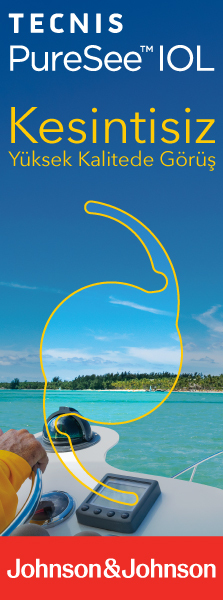TJ-CEO
2008 , Vol 3 , Num 3
The Risk Faktors Effecting Posterior Capsule Rupture During Phacoemulsification
1Ankara Numune Eğitim ve Araş. Hast. 3. Göz Kliniği Şef Muavini, Ankara, Uzm. Dr.2Fatih Üniversitesi Tıp Fakültesi Göz Hastalıkları A.D., Ankara, Uzm. Dr.
3Ankara Numune Eğitim ve Araş. Hast. 3. Göz Kliniği, Ankara, Uzm. Dr.
4Ankara Numune Eğitim ve Araş. Hast. 3. Göz Kliniği Şefi, Ankara, Uzm. Dr. Purpose: To evaluate the factors affecting posterior capsule rupture (PCR) in phacoemulsification.
Materials and Methods: We included 432 eyes of 432 consecutive patients operated between December 2001 and December 2003. We noted intraocular pressure, axial length, presence of pseudoexfoliation, glaucoma, trauma, uveitis, type of cataract, history of surgery, surgeon’s experience, capsulorhexis, type of anesthesia, time of PCR, loss of vitreous, and cortex or nucleus drop into the vitreous.
Results: The patients over the age of 71 years constituted major group (35%) of this study. PCR has been detected in 95 cases (21.9%) and evaluated in 4 stages. We detected PCR in one case before started the surgery (1.1%), in 60 patients during nucleus emulsification (63.2%), in 28 cases during irrigation and aspiration (29.5%) and in 6 cases during intraocular lens implantation (6.3%). Statistical significance has been found between the PCR and radial rupture during anterior capsulorhexis, experience of surgeon, history of glaucoma, high intraocular pressure before surgery, age, type of anesthesia, axial length and stage of the surgery (p<0.05 for all). The risk was not related to type of cataract, sex, level of visual acuity, presence of pseudoexfoliation and systemic disease (p>0.05 for all).
Conclusion: The risk of PCR increases when capsulorhexis is irregular, surgeon is inexperienced, preoperative intraocular pressure is high, and when patient has glaucoma and is older. If we become careful about these risk factors we can decrease the rate of PCR which causes serious visual problems. Keywords : Phacoemulsification, posterior capsuler rupture





